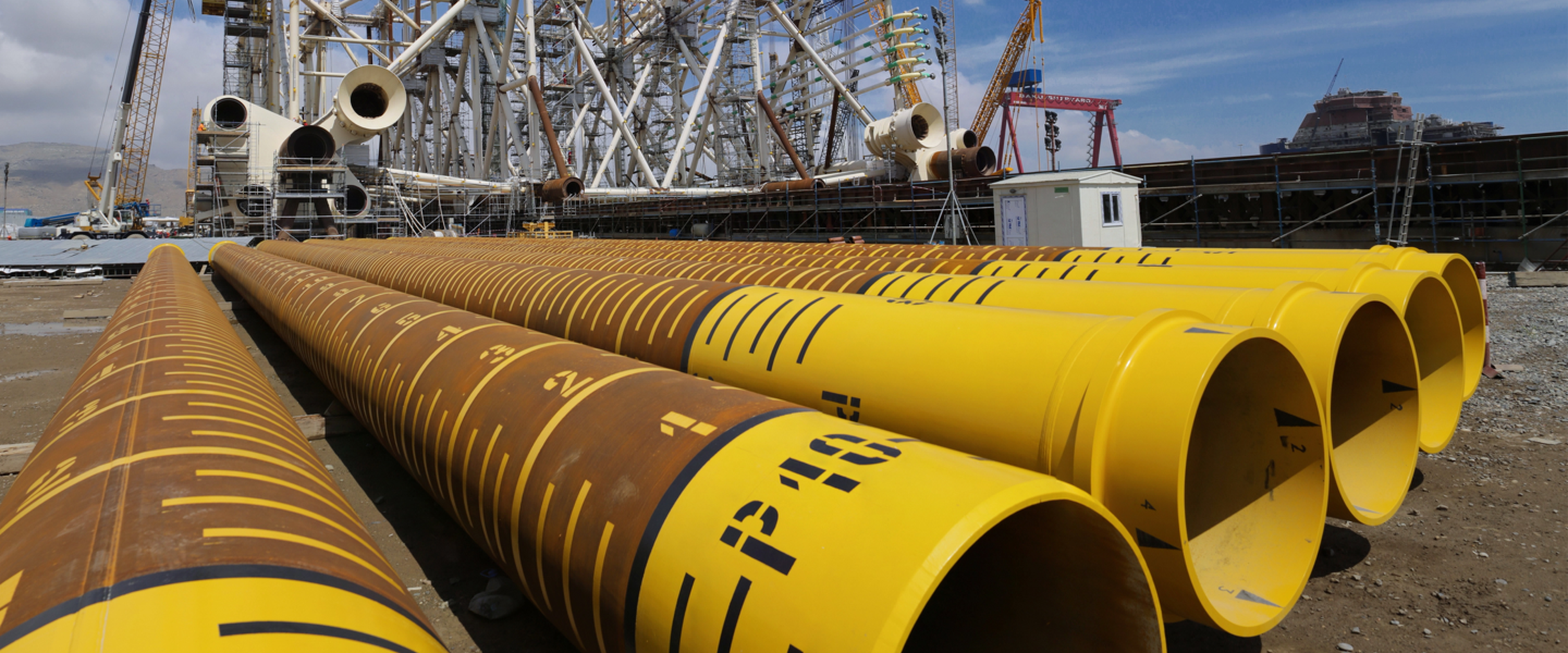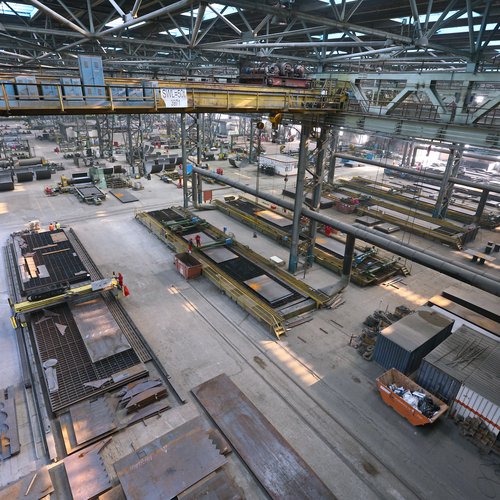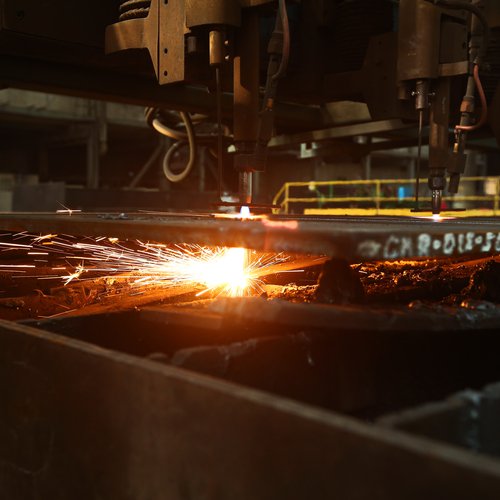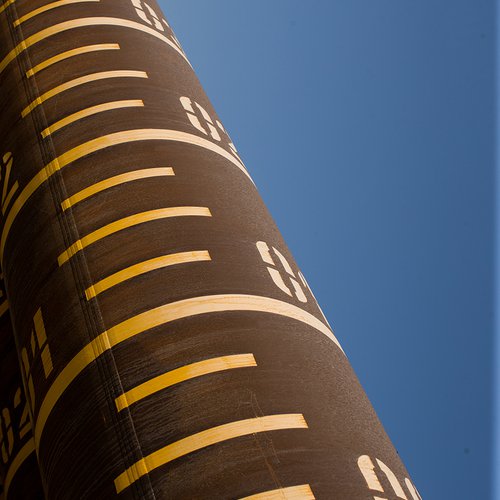Piles Fabrication Process
- Steel plate is received from the manufacturer by means of rail or road truck transportation
- Steel plate is received and unloaded in the designated stock yard area. During the offloading process steel plates are visually checked. The plates with defects are filtered and are not used in further work.
- Plates are checked dimensionally and heat stamps are checked against mill certificates. Plates are put onto the Engineering Data Base, where they are given a unique plate number and are now available for allocation.
- Allocated plates for pile fabrication are nested and drawings issued, through Engineering Department via document control to the Rolling Mill
Nesting Rolling (N.R)
Rolling Sheet (R.S)
Assembly Rolling (A.R)
- The Rolling Mill requests plates from the stockyard using a Material request form. Before receiving plates are to be rolled, all plates must pass through the Shot Blasting Process to remove surface contamination which can contaminate the Rolling Machines
- After blasting, plates are transferred to the cutting table. Before cutting begins, plate sizes and numbers are checked against the Nesting Rolling Sheet to ensure the correct plates are ready to be cut
- Plates are cut using an oxy/gas Cutting Process to Length/Width
- Quality Control (QC) check is done to confirm Dimensional Accuracy and Correct Weld Preparation and that Piece Marks have been applied
- Plates are then dressed by grinding, to remove any slag left over from the cutting process
- Plates are ready to be rolled, allocated to a Rolling Line depending on Thickness, type of Rolling Diametr and Radius
- Rolling plates are checked for correct Radius using a pre-cut template. Plates are then tacked along the long seam and removed from the Rolling Machines. Further QC check is then carried out to determine that the rolled can is within the Permitted Tolerances for Ovality and Circumference
- After all QC checks are over, the rolled can is sent for welding. The welding process is broken into the following stages:
Internal Long sweam welding (SAW)
External automatic gouging,
External long seam welding (SAW).
After NDT welding testing takes place, QC checks are carried out and Calibration of rolled cans takes place, if required.
- Single cans are then sent to Fit Up stations and depending on the Final make up of the Pile, these single cans are joined to make Larger Sections
- Pile sections are then transferred to the Heavy Welding Line for further assembly into typical Field weld sections, nominally 50 meters by 200 tons.
- Completed sections are then transferred from the Heavy Welding to the Site Erection area using SPMT (Multi Wheel transportation)
- Final stage of the Pile assembly. Once welding and QC/NDT is complete, Pile Markings are applied, Pile end machining, Flotation Collar, Diaphragms and Towing Bollards are installed
- Piles are then transferred to the quayside to await Load Out, tow away and installation
Capacities
ROLLING
- 8 automated machines with capacity up to 150 mm thickness and up to 4,000-4,500 mm internal diameter
- 22 SAW welding booms and 9 Mobile Semi-Automatic Welding Machines
- 16 Overhead cranes up to 50 tons capacity
- Monthly output: 2,500 tons on a single shift basis
FABRICATION
- 14 covered structural bays
- Overhead Cranes up to 90 tons capacity
- 3 computer assisted profiling machines Muller RB 1,200 as largest
ERECTION
- 550,000 m² of erection area
- 25 Crawler & mobile cranes with up to 1,350 tons lifting capacity
- 4 Skidways with a bearing capacity from 85 t/lm up to 350 t/lm
- Overall capacity over 1,000 tons
LOAD OUT
- 1,500 m refurbished quay with 3 x 100 m reinforced offloading area (50 t/m2)
- Dedicated Push-Pull System capable of moving structure up to 30,000te.
- Direct sea access from a sheltered harbour.
TRACK RECORD
- ACG PROJECT PHASE 1 : CA JACKET (14,130 t, 143.3 m) CWP JACKET (12,043 t, 143.3 m)
- ACG PROJECT PHASE 2 : WA JACKET (13,800 t, 133.9 m) EA JACKET (15,750 t, 166.9 m)
- ACG PROJECT PHASE 3 : DUQ JACKET (15,900 t, 185 m) PCWU JACKET (15,600 t, 185.m)
- COP PROJECT: COP JACKET (18,200 t, 196 m)
- SD2 PROJECT: PR JACKET (13,718 t, 107.6 m) QU JACKET (14,432 t, 107.6 m)












